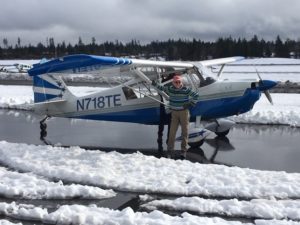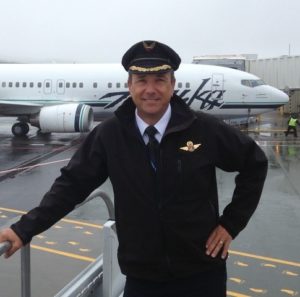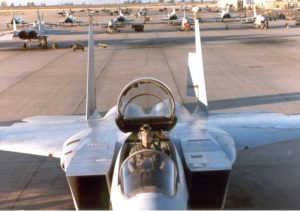Hi Folks. We are pleased to announce that we HAVE RESUMED tailwheel instruction and endorsements with our fully restored 1947 Piper J-3 Cub (90 hp), 1975 Citabria 160 hp GCAA, 1975 Piper Super Cub PA-18 fully restored in 2016, and our 2015 American Champion 8KAB Super Decathlon. Our instructor, Tom Rogers, our CFI, is able to dialogue with you by email, text or phone at this time. If you wish to send us your name, email address and phone number, we’ll forward everything to Tom whom will contact you. Tom has also designed a course to meet the CFI Instructor Candidate Spin Training Requirement and a GA Upset Recovery course. See Tom’s “instructor page” elsewhere on our website.
 Tailwheel training in our Piper J-3 is limited to pilots who weigh nor more than 185 lbs. Tailwheel training in the Piper J-3 with the 90 hp engine: 175.00 per hour (includes fuel). Tailwheel training through endorsement in Citabria 7GCAA with 160 hp engine: 175.00 per hour (includes fuel).Weight limit for students 250 lbs. This price is for airplane only. The instructor is paid separately. Sales tax only collected on airplane costs. We recommend this plane for pilots whom have had some or a little tailwheel training previously but not yet gotten an endorsement. Also it’s the way to go for someone anticipating the purchase of a Carbon Cub, Husky or Maule or Cessna taildragger. Training for insurance requirements in the Piper Super Cub PA-18 with 160 hp engine: 175.00 per hour (includes fuel). Our 2015 American Champion Super Decathlon with the 180 hp engine: 195.00 per hour (includes fuel and use of parachute).
Tailwheel training in our Piper J-3 is limited to pilots who weigh nor more than 185 lbs. Tailwheel training in the Piper J-3 with the 90 hp engine: 175.00 per hour (includes fuel). Tailwheel training through endorsement in Citabria 7GCAA with 160 hp engine: 175.00 per hour (includes fuel).Weight limit for students 250 lbs. This price is for airplane only. The instructor is paid separately. Sales tax only collected on airplane costs. We recommend this plane for pilots whom have had some or a little tailwheel training previously but not yet gotten an endorsement. Also it’s the way to go for someone anticipating the purchase of a Carbon Cub, Husky or Maule or Cessna taildragger. Training for insurance requirements in the Piper Super Cub PA-18 with 160 hp engine: 175.00 per hour (includes fuel). Our 2015 American Champion Super Decathlon with the 180 hp engine: 195.00 per hour (includes fuel and use of parachute).
Instructor pricing 75.00/hour*
*Our instructors receive the full amount that is charged rather than the standard FBO practice of only paying a percentage going to the instructor. It helps us attract higher quality professionals. Our instructors are professional pilots with 10,000 to 30,000 hours, military backgrounds including flying F-15s in the Airforce or F-14 Tomcats in the Navy.
The email below is an “introduction letter” we just sent out to several inquiries in the last week. It explains an overview, our philosophy, our new instructor, etc. It’s a bit wordy but it should help pique your interest.
Dear Interested Pilots,
I wanted to use this email as a chance to write an overview of what we’ll be doing this year so that I’ll have it to copy to other inquiries over the next several weeks. I’ll try to cover equipment, philosophy of skills we hope to impart and our instructor.
Philosophy
————-
Olde Thyme Aviation has been operating in the region for 29 years; previously operating at Boeing Field until we moved the operation over to the less crowded Bremerton Airport three years ago. This has enabled us to resurrect a tailwheel instruction program that we had operated from 1995-1999 until lack of administration and classroom space became prohibitive with the explosion of corporate jet growth at Boeing Field. I myself am not a CFI but I have over 10,000 hours on tailwheel airplanes ranging from all the Piper Cub Series through all Cessna tailwheel models, Stearman, Travel Airs, Waco models (open cockpit and Cabins) and T-6. I have flown 90% of the scenic flights in open cockpit airplanes at Boeing Field over those 24 years we were there and now do all the open cockpit flights at PWT. Our second pilot, Lee Oman handles the aerobatic flights in the 450 Stearman and the T-6 flights and Joe Suligoy is our Stearman Instructor. Although I won’t personally be your instructor, I try to screen, select and bring aboard instructors that have the Olde Thyme Aviation skill set and philosophy of flying tailwheel airplanes. We try to burst through many of the misconceptions out there about landing tailwheel aircraft. Emphasis is on three point landings which is the only guaranteed way to land a tailwheel airplane without incident in crosswinds except in one single circumstance. The wheel landing is also taught as it is a requirement for the tailwheel endorsement but it is an addendum to the most basic important skill on tailwheel airplanes. Our mission at Olde Thyme Aviation is to provide “skill sets” from top professional pilots who have tens of thousands of hours plus military backgrounds rather than hiring young pilots advancing in their CFI skills as they try to reach employment opportunities as ATP commercial pilots. We try to sustain permanent instructors rather than transient instructors. We prefer instructors, when I can find them, whom have had a professional military background, have past tailwheel experience of course, mountain flying experience, unusual attitude recovery, etc.
Instructor
Tom Rogers recently retired from Alaska Airlines. He also was an F-15 fighter pilot and instructor in the Air force. He also continues to test and evaluate new Alaska Airline pilots in his status as “emeritus.” He will be contacting you through text or emails for scheduling.




Equipment
————–
For lighter weight people and for people whom have not yet ever flown a tailwheel airplane, we use a 1947 Piper J-3 Cub with a 90 hp engine with electrical system so there is no hand propping involved. Cutoff weight is 180-185 lbs for pilots. It’s the easiest for a pilot to learn if never before ever exposed to tailwheel flying. We also use it as a pre-amble to Stearman Instruction as it is very similar in flying and landing characteristics to the Stearman; just a lighter plane with one less set of wings! (a little tongue in cheek there)
For pilots already somewhat acquainted with tailwheel, particularly those that anticipate flying higher horsepower planes, we have a 1976 Citabria (Bellanca) 7GCAA with a low time 160 hp engine. We took it to the factory in Wisconsin and had them put on the metal spar upper wing with the higher gross weight STC so this plane handles a useful load of 520 pounds and will accommodate a beefy pilot. Plus, the PIC sits in the front seat instead of the back like the Cub. We’ve also outfitted this plane with a G-5, new comm and full ADSB in and out (Garmin 375) so you can concentrate on your skills while the instructor in the back can monitor traffic on his IPAD. Takes one less distraction away from the equation for your concentration. (Doesn’t release you from normal PIC visual flight rule responsibilities at all; just puts an extra margin of safety into the plane with the instructor). All told, we put about 90,000 into this plane to provide you with a strong durable platform that is dependable for your needs.
For pilots planning on purchasing a Carbon Cub, Husky, Maule or something similar in the future, we also have a fully restored Piper PA18 Super Cub with a 160 hp engine that I use for daily commuting to Seattle. This plane can be put into our instruction pool if needed to help somebody on a “make and model” ‘requirement. We look at this on a case by case basis.
We’ve also added a 2015 American Champion Super Decathlon for the GA upset recovery course and Aerobatic Instruction.
We can also expose you to other tailwheel aircraft after your endorsement, such as our biplanes of different models, but since we have the insured for scenic flights currently rather than instruction, we can coach you through the takeoff, but we still have to do the landings ourselves; but it at least gives you an idea of what you’ve been exposed to for later in case you get the bug and want to come back for some Stearman Instruction with Joe Suligoy.
So that’s our overview.
Best to all and thanks again for contacting us,
Ken and Cate Horwitz
Olde Thyme Aviation
Bremerton Airport KPWT